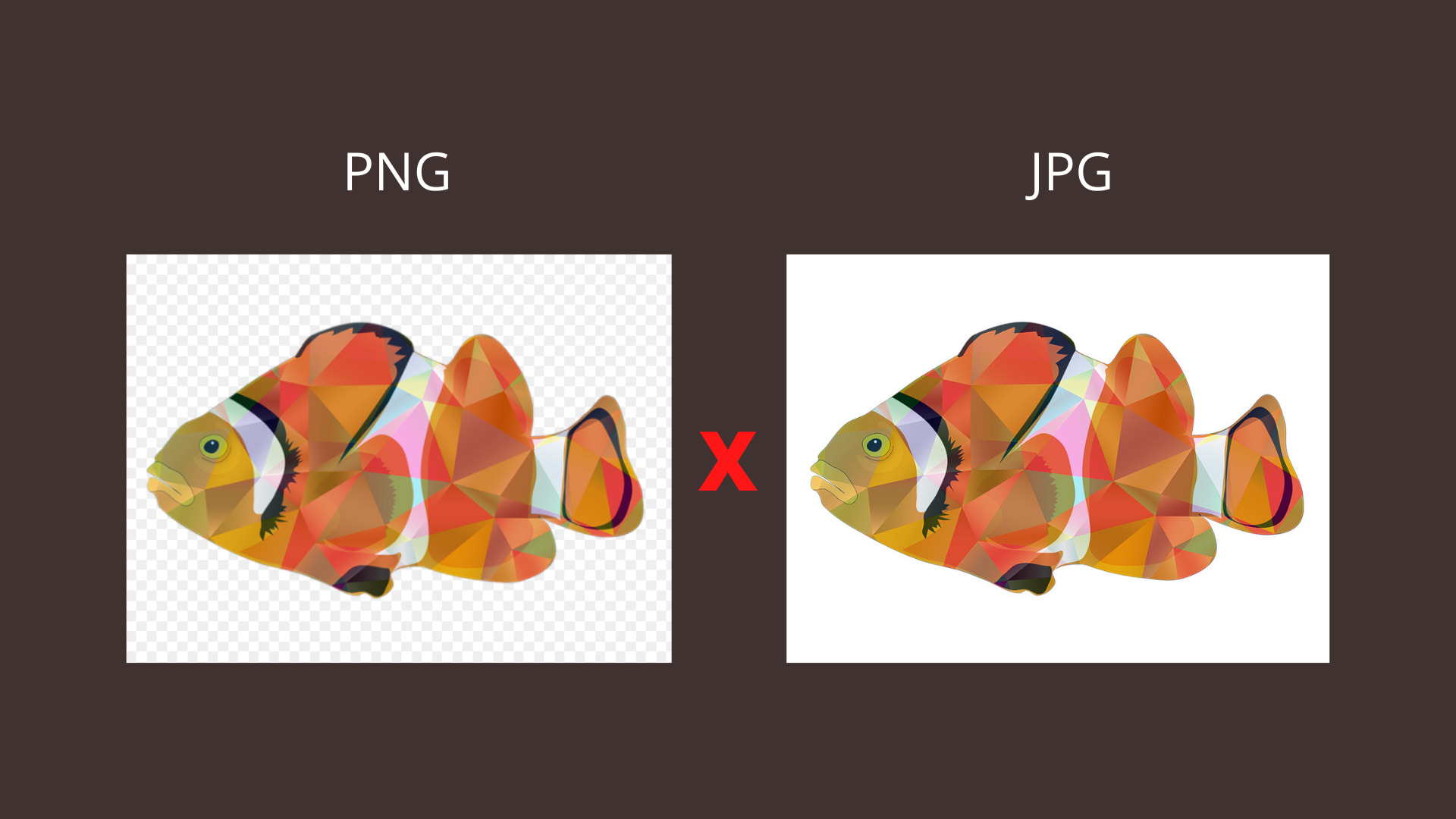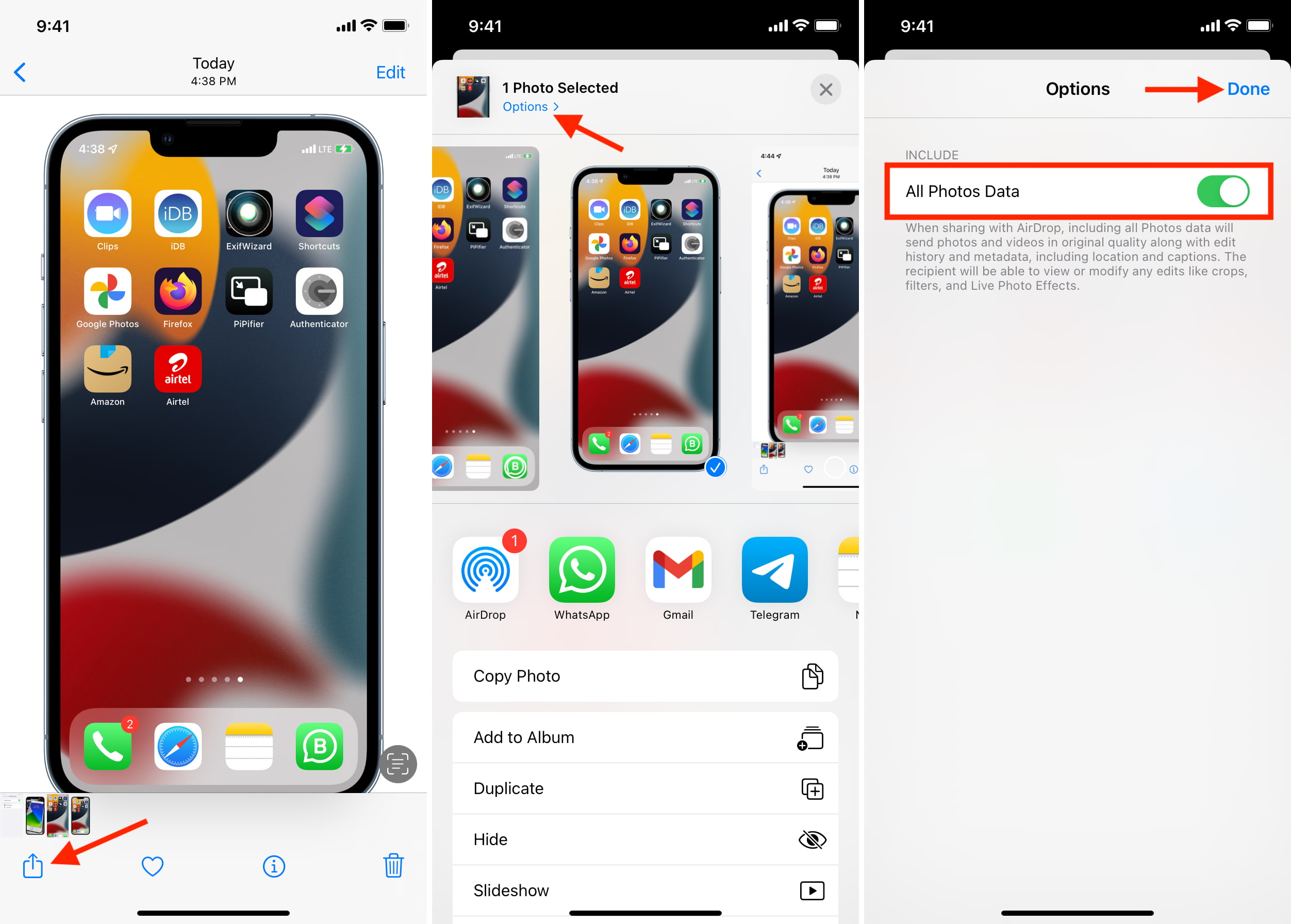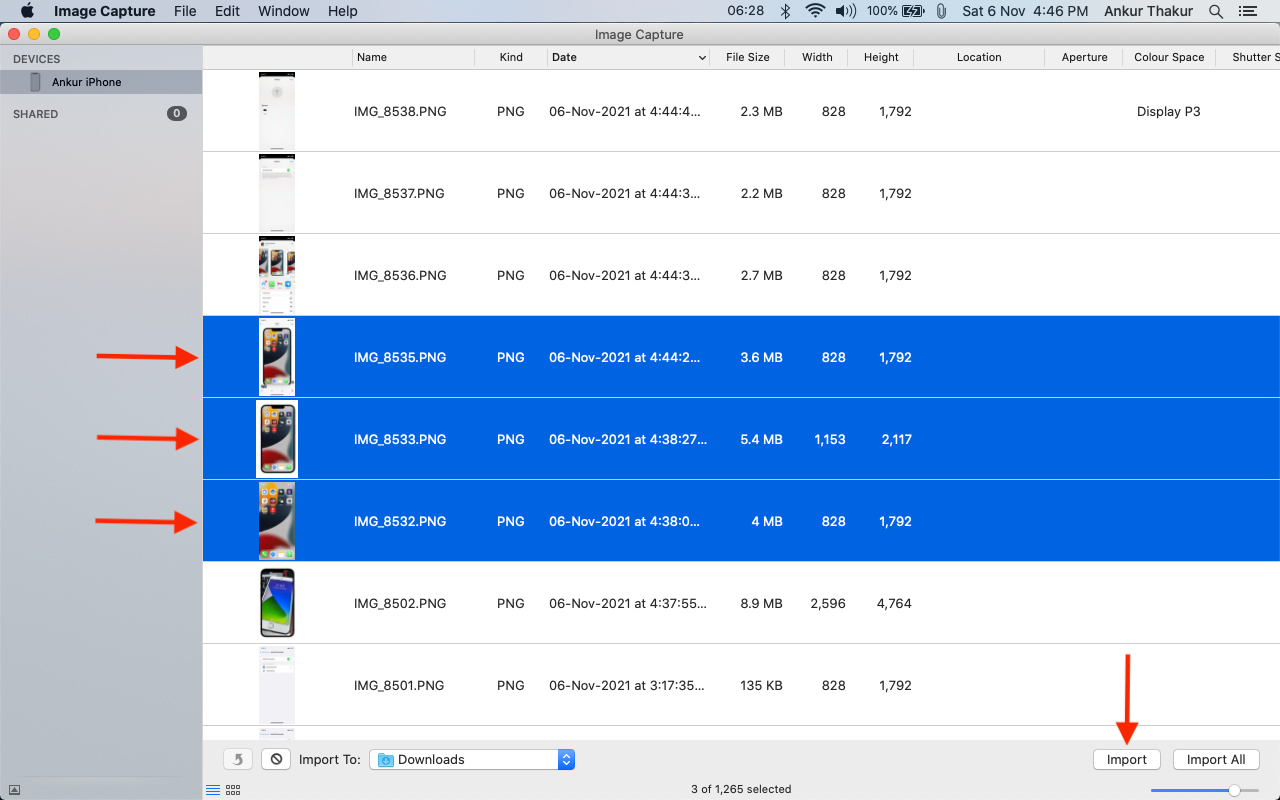Are you sending images via AirDrop from your iPhone to Mac, and the image format changes while transferring? For instance, you have the image in PNG format on your iPhone, but after sharing it with AirDrop, it appears on the Mac as a JPG file. If you face a similar situation, here’s how to transfer images from iPhone to Mac in original file format, at full quality, with all its Exif data and everything.

1. Enable “All Data” before transferring images via AirDrop
I make screenshot collages for iDB posts on my iPhone 11. I AirDrop them to my 2012 MacBook Pro running macOS Catalina. They used to transfer perfectly. But a while back, I updated my iPhone to iOS 15.1. After this, I noticed that the PNG images I send from my iPhone appear as JPG on the MacBook. This reduces the quality of the screenshots and also adds a white background to transparent images.
I tried multiple ways, and none worked for me except for the steps below.
I agree it can be unpleasant to follow these steps every time to AirDrop images. But until Apple fixes this in an update, here’s how to ensure you can transfer images in original quality and format.
- Open the Photos app and select multiple photos or open one in full screen.
- Tap the share icon.
- Tap Options.
- Now, enable All Photos Data > Done.
- Tap AirDrop to transfer the pictures with all the data.

You may also like: How to access photos on iCloud using iPhone, iPad, Mac, and a web browser
2. Turn on “Keep Original” from iPhone Settings
By default, iPhone running iOS 11 and later takes images in High-Efficiency Image File (HEIF) format. HEIF takes substantially less space than JPG. But this format isn’t supported on all devices, operating systems, apps, and websites.
So, either you can set your iPhone to shoot in JPG instead of HEIF. Or, you can choose to shoot in the high-efficiency format (HEIF), thus saving space but have your iPhone convert them to JPG when transferring. You can learn more about all this here and also see the steps to proceed.
Note: This method did not work between my new iPhone running the latest iOS 15.1 and my old Mac running macOS Catalina. Maybe an update will fix this.
Related: How to convert various image file types to JPG or PNG on iPhone or iPad
3. Bonus Tip: Use Image Capture to get images from iPhone to Mac in the original format
Image Capture is a simple yet excellent macOS app by Apple, which is pre-installed on all Macs. I often use this to transfer images between my iPhone and MacBook when AirDrop doesn’t work, I have tons of images to copy, or I face issues like this one where the format changes.
Here’s how to use Image Capture to transfer images from iPhone to Mac in original quality and format.
- Connect your iPhone to your Mac using an appropriate cable.
- Open Image Capture by pressing Command + Space Bar and typing its name. You can also open it from the Launchpad or Applications folder.
- Unlock your iPhone using Face ID, Touch ID, or entering its passcode.
- In a few seconds, you should see your iPhone pictures inside Image Capture. Select one image or press Command and select multiple.
- Finally, click Import. You can see these images in Mac’s Downloads folder.

This is how you can transfer pictures from your iPhone to Mac without any reduction in quality or change in format. Remember that these methods also include the Exif data, which can disclose things like where you shot the picture and more. So, take caution if you would like to hide them before sending the image to someone.
You may find these useful: